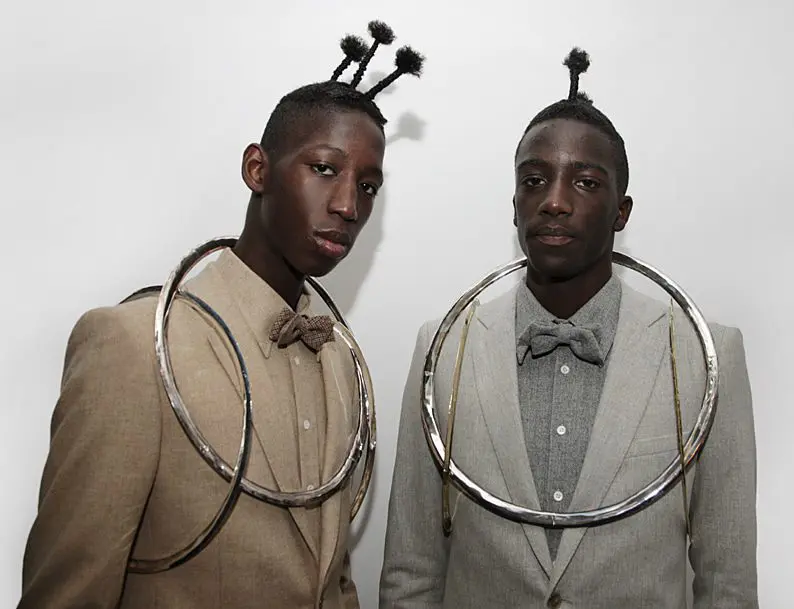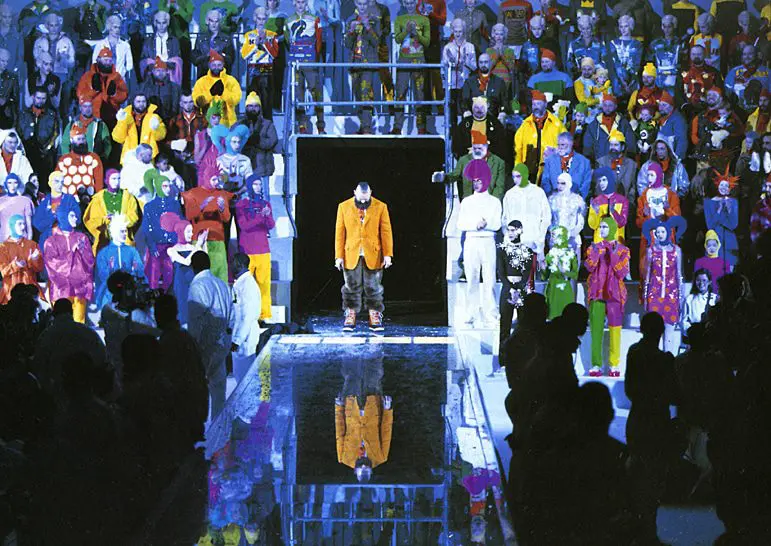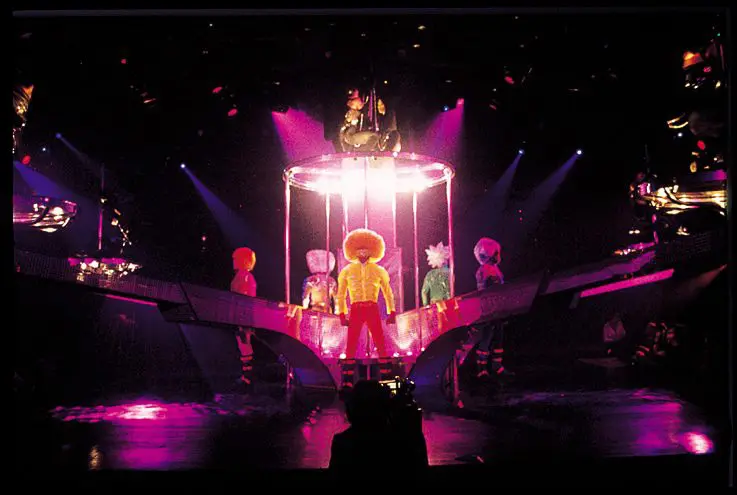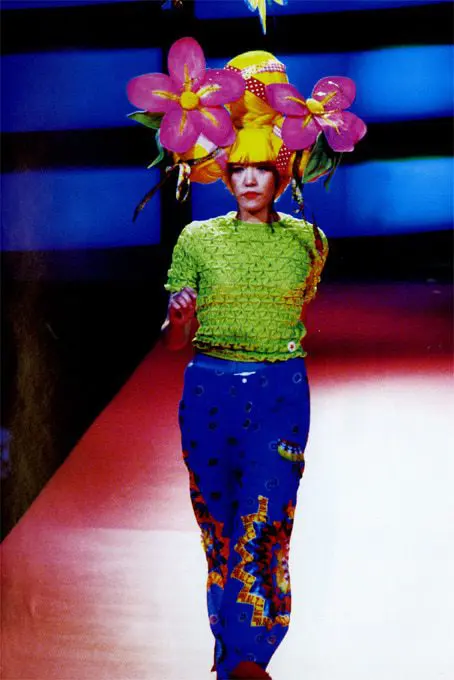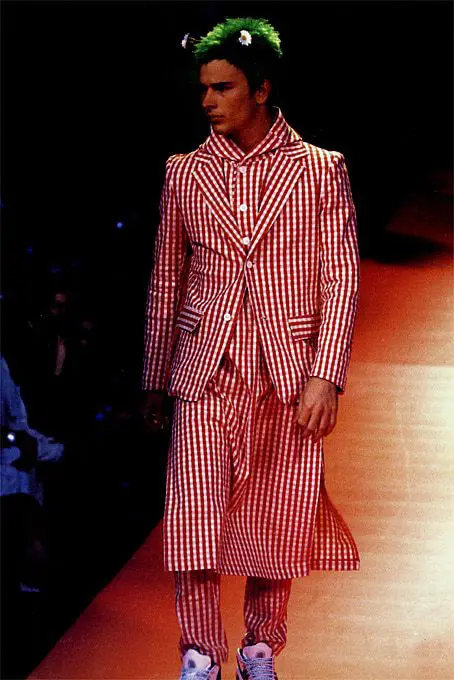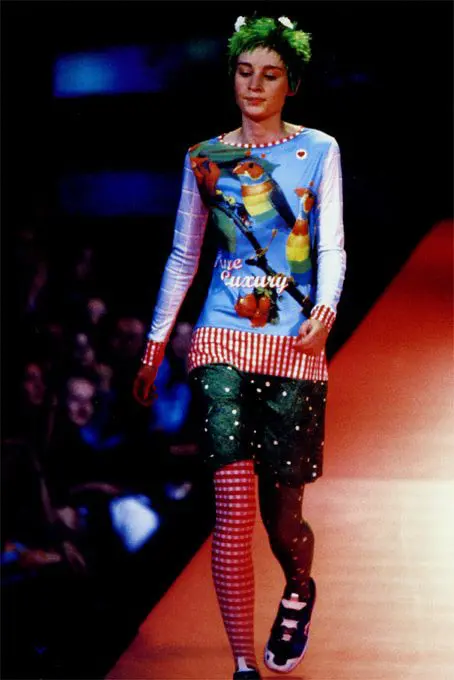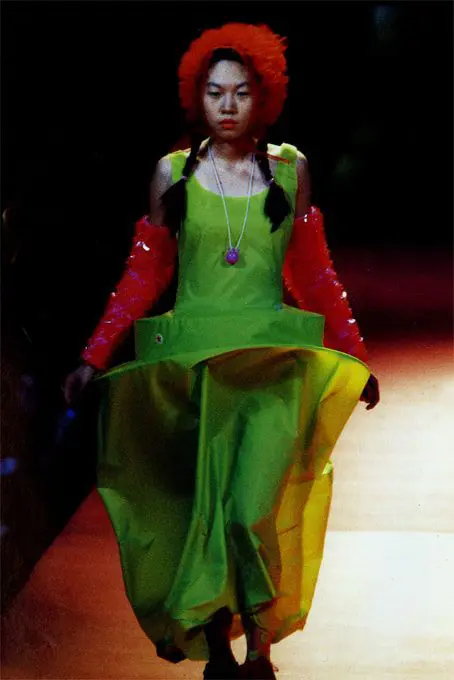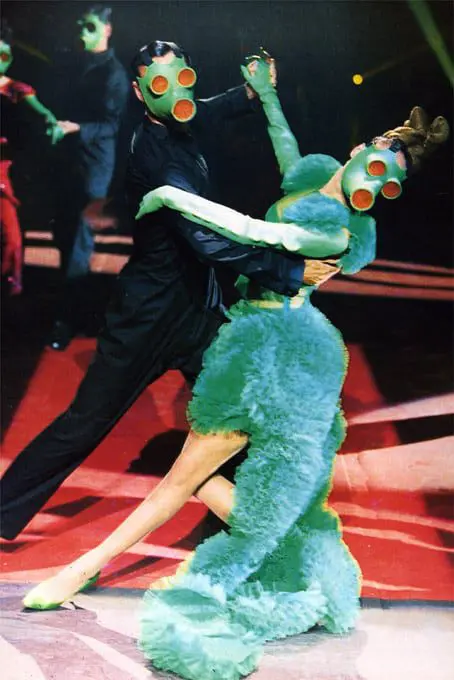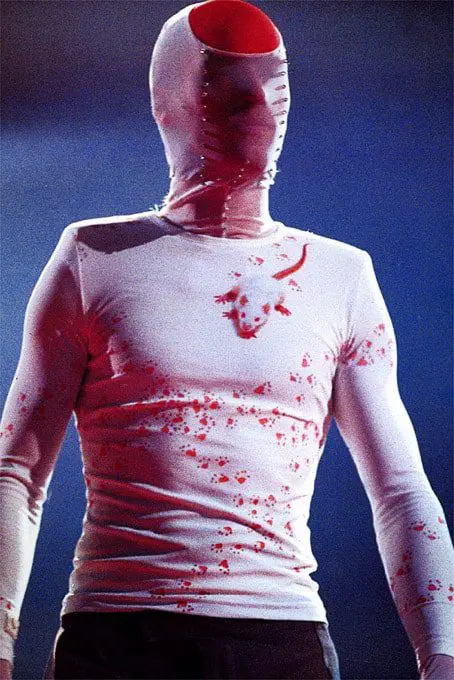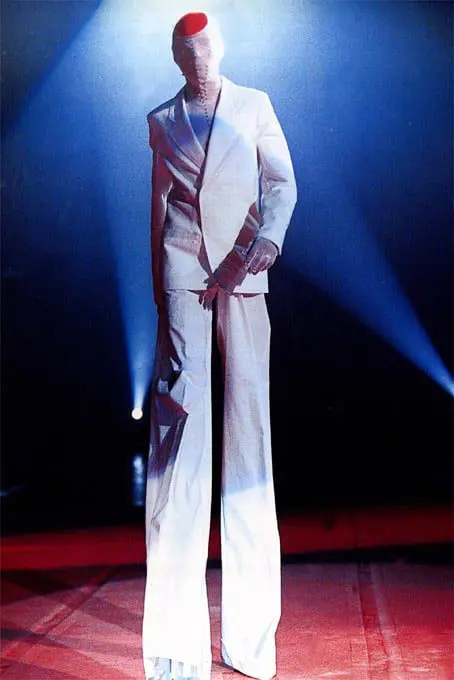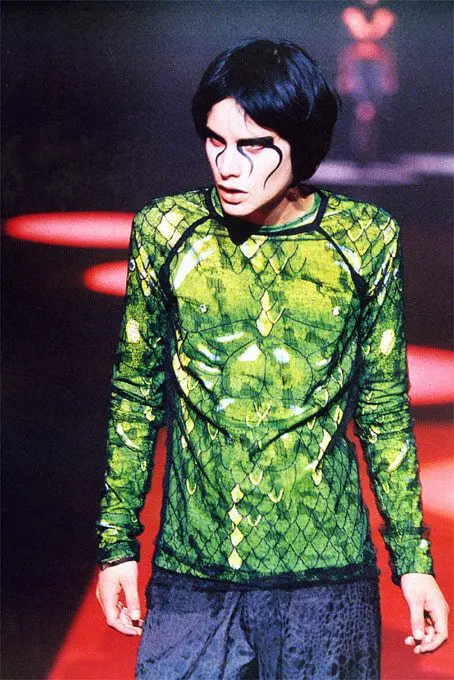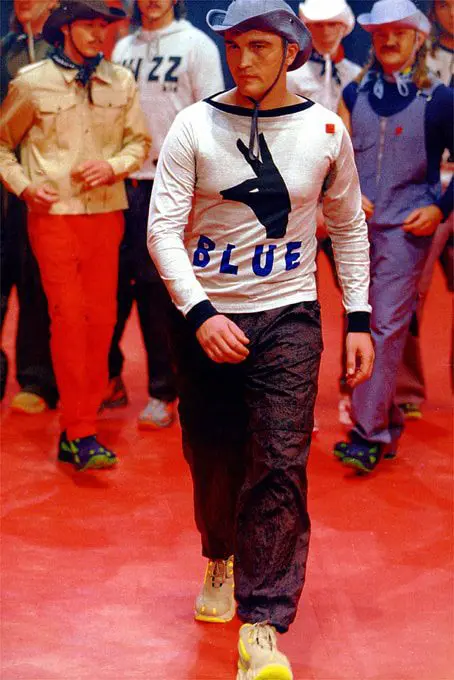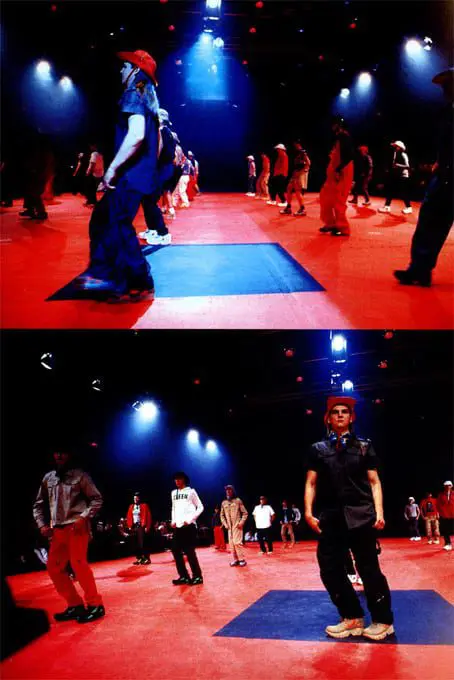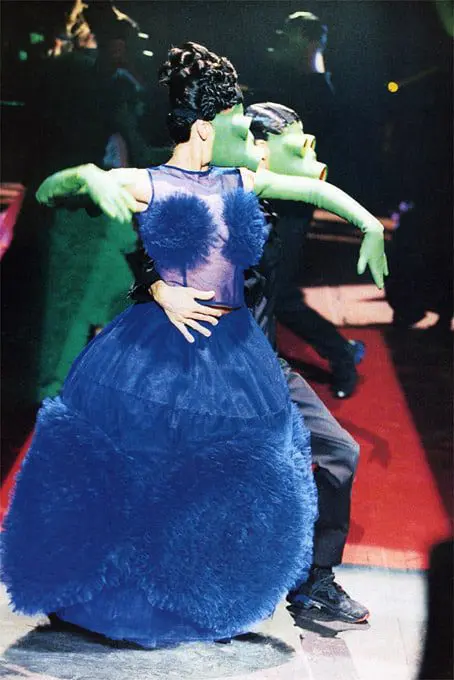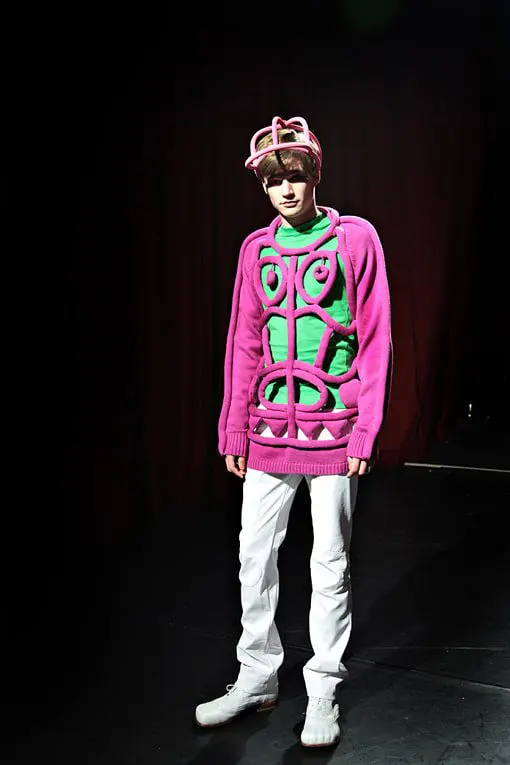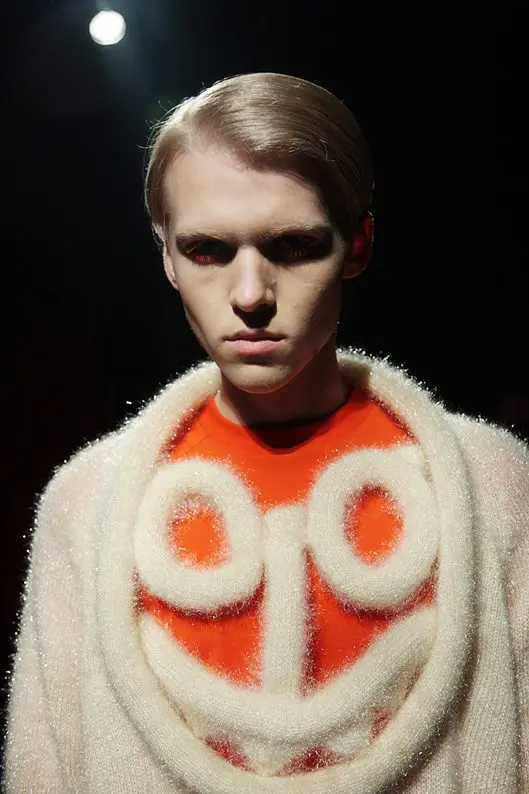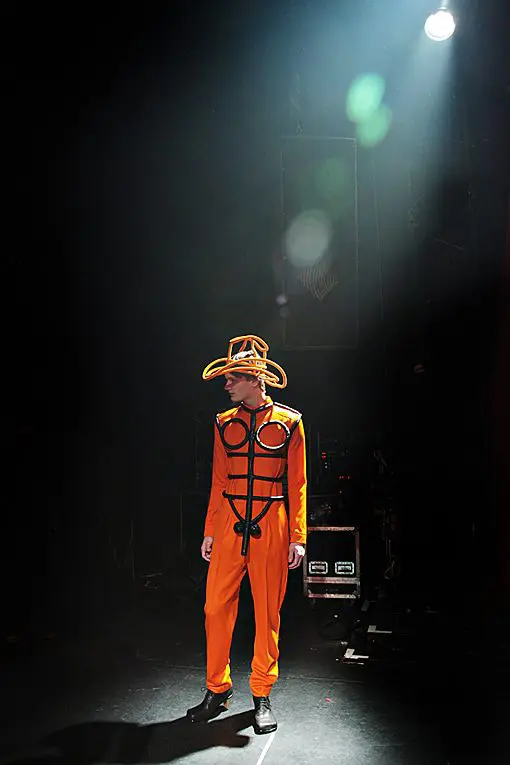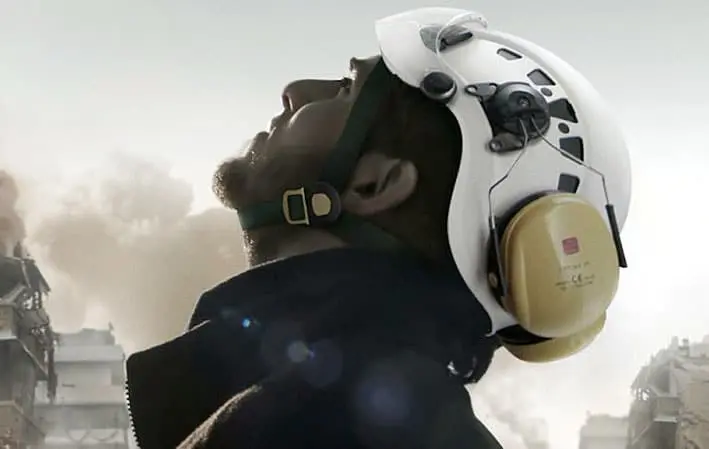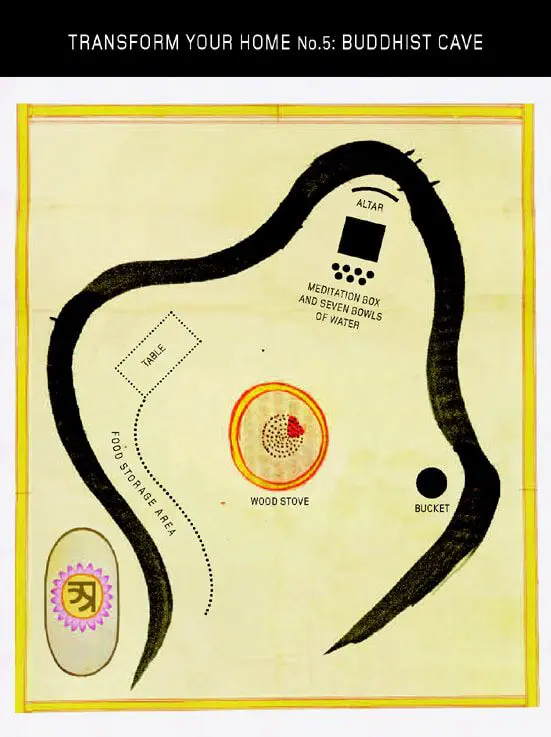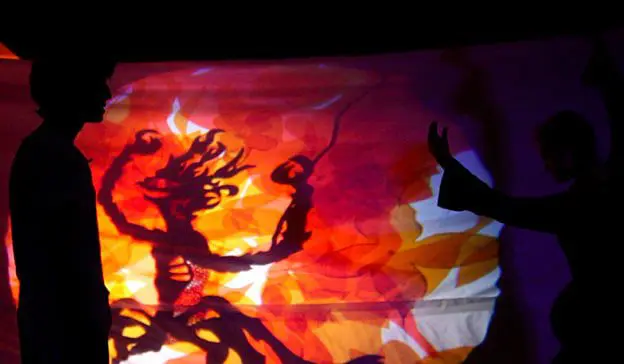Walter van Beirendonck, founding member of the Antwerp Six, tells Jim Morrall about why he is a giant monster with a big heart. In the run up to ‘Dream the World Awake’, a major retrospective at the MoMu fashion museum of Antwerp, we talked about some splendidly exuberant archives and legacies. From altruistic, positive and progressive humanism to putting chubby, hairy men in pants on the runway…
Jim Morrall: So you’ve had a look at the questions already?
Walter van Bierendonck: Yeah, yeah, I have the questions here in front of me, they’re not that easy but we’re gonna try yeah!
JM: The first one’s not so bad! How was it working with Nick Knight and Simon Foxton?
Walter van Bierendonck: Yeah that’s an easy one! It was incredible; of course I knew the work of Simon. But we’d never met before, we’d only talked by email and it was really nice to meet and to work together because there was a huge energy. It was really nice that he… that they… had a kind of reinterpretation of all the things that I did in the nineties and the last ten years, so it was a really nice project.
JM: Can you tell us about what you did with them and the outcome?
Walter van Bierendonck: : In fact I asked Nick what he would like to do about the exhibition, and by brainstorming he decided that he wanted to do a big shoot with the body of my work. He suggested to work together with Simon Foxton which was I think one of the only stylists that I would ever trust to get into my body of work! And Simon came to Antwerp, he did a huge selection out of my archive and then he went to London, he restyled… he made new looks in fact with all different collections and all different accessories from different collections and then that was shot by Nick. And the shoot will be featured in GQStyle, with a big picture with all these models and looks that are very dynamic, lots of jumping and lots of energy!
JM: It must be really nice to see your archive worked like that!
WvB: Yes, yes! I am now for a few months in the middle of it, literally, I kept maybe ninety per cent of what I have done through all these years, I started to collect in the eighties. That’s really a lot of clothes… and now I’m also starting to put together all of the looks for the exhibition. And I’m going through it all, a lot of memories, a lot of souvenirs and a lot of work.
JM: Talking about memories and souvenirs, the next question relates to Wild and Lethal Trash. You had some pretty radical ways of presenting collections. Is that something that you miss?
WvB: I mean, time changed, and the world changed, and I changed, and fashion changed. And I think that at that time it was an amazing project, just to get like unlimited budgets to just do what I had in my head and I really could present my collections in the most amazing way which was really nice for me. But I don’t think it would fit with the spirit of today. It’s much more about the collection, though of course there is a little bit of the show going on. But at the time it was about the collection with a lot of entertainment and a lot of messages and a lot of energy, with communication also. I don’t miss it; really, I think to do it now would not work.
JM: What were your inspirations when you were doing these big shows?
WvB: Erm… the world, everything, I don’t know! I was pulling together just yesterday things from that period and it was a lot of experimenting, lots of experiments with material at that time. I had great people working with me at that time too. It all started with security materials and safety materials and work wear, and from that point on I did a lot of research with new materials. That was really important at the time, compared with now it was a much more technical approach, and going deeper into research. But also, there are my all time inspirations like tribes, ethnic tribes, the supernatural, the future, beauty in general. And fairytales. Throughout these thirty years these have been my inspirations.
JM: Why beauty in general?
WvB: Beauty is always an inspiration, and it is always there. But at that time I was rethinking beauty, the physical. I was using bigger men than the average… and then next to that there was another inspiration, plastic surgery. I did a show inspired by that with a lot of prosthetic make up, the idea of reworking bodies and recreating a new kind of beauty.
JM: From looking at your shows in a nineties context I feel like there might be a link between the YBAs, the Young British Artists, and yourself, do you see what I mean?
WvB: I don’t know, ‘cos I think that maybe the starting points, the energy and the ideas behind were very much related as an artist’s way of thinking. Rather adventurous, innocent without really thinking about it. And you can compare it with that art scene at that time; it was a very spontaneous process. I had these ideas in my mind and I just wanted to do it, and that was my main interest and you might compare that with their attitude, I don’t know.
JM: I recently interviewed Inge Grognard and she was flattered by comparisons with her work and art brut, do you ever feel as though you have the same outsider approach?
WvB: I definitely feel like an outsider in the fashion world, I have that feeling more than ever, although I am within the system. I am showing regularly, I have my normal showroom dates and everything, but I have this feeling that I am an outsider, I don’t get the feeling that I am acting exactly like a fashion designer, as other collections or houses are working. It’s much more about expressing myself, it’s much more about doing what I like to do, and it’s not so much about pleasing an audience or a client. Of course, I have some very loyal clients who are following me and I have a lot of very loyal followers in the press. But I do feel like an outsider.
JM: But then, your followers wouldn’t want you to change and please everyone, they like that you are an outsider!
WvB: I’ve been going for such a long time! I don’t think I am going to change my way of working. I don’t want to change ‘cos I like the way I am working fashion, I like to tell stories and I like to communicate. I like to think, I like to respect certain things that are important to me and I don’t like the other side, the side of business, pleasing department stores, I try to avoid that. And I guess that makes me an outsider.
JM: Being an outsider gives you space and objectivity to make the comments that you want to make…
WvB: Yeah, that’s what I really feel and there’s a growing respect for that because for a long time a lot of people saw me as just doing things that were strange, colourful, but now I feel happy that I am getting some respect from the press for doing that.
JM: In terms of the messages that you like to communicate, and placing them within a fashion context… a lot of people criticize fashion’s built in obsolescence and wanton consumerism. You have a lot of positive messages to communicate, how does that sit with fashion?
WvB: Yeah that’s a strange thing, I know that there is a lot of criticism of fashion and for a lot of creative industries it’s true; it’s a very superficial world, a focus on beauty, but for me it is very important. I am a very big believer in the future and moving forward, and I try to reflect this in my work. And I think that creative people should do that, whether they are fashion designers or artists, I think that they ought to try to make people think about their reflections, and how eventually things can be changed. It can start with small things, but that can then have an effect on the world. There’s not a lot of people that think that way, but it’s about believing and that is what I do.
JM: When you talk in that way it makes me think about art, as if I am talking with an artist. How do you feel about all this talk over the last five years about art and fashion and the link between them?
WvB: There is definitely a difference, I feel much more like a fashion designer than an artist. But I am aware that there is a thin line between these two worlds. I am aware when I am presenting a show, a collection. When I think of the big shows that I have done in the past, you can read it almost as a performance also. And that’s when you get close to the art world; it’s also a world that has given me some very good reactions. Back in the nineties I had a lot of artist who came to my shows, a lot of art press writing about my shows. I am not an artist but I am entering that world by doing things in my way I think.
JM: Art is increasingly a commodity, subject to market forces, like fashion products. Is this bad for art, good for fashion, both, or neither?
WvB: I think that in fact one of the most important things about fashion is that it’s sold, so I don’t have so much of a problem with that. Another thing is that fashion moves so fast, every six months you put new things on the market, that’s a big factor when comparing it with art works and how artists are working. And I think at the end of it, it’s a product to be sold and worn. I don’t have any problem with that!
JM: How do you feel about other designers, is fashion dead? Do you see anyone making anything new?
WvB: I don’t know, it’s a little bit like a weak period I think it’s very difficult for a lot of designers to express themselves properly because there is so much competition with the luxury houses. Seeing designers, they’re all very scared and aware that it’s a difficult moment in general. I think also that that’s one of the reason’s that there’s not so many fashion statements now. Even people that used to do that just keep on repeating themselves. I think it’s not dead but it’s a kind of… how would you say that…
JM: Stalemate?
WvB: Yeah, it’s just a very difficult period and I hope that at the end there will be more energy. I’m expecting that a bit of young people, that they are going to try and bring that sort of energy because now the most respected designers, those giving the most energy, are from the older generation, which is strange, I do hope… I have a lot of very talented students and I hope that they are gonna find a way to express themselves. I see that it’s very difficult because if they make their own collections, they need to have results, to sell it, they need to get it into shops and they don’t have so much time to experiment, to dare with things.
JM: Who do you respect in terms of new talent?
WvB: I have a lot of respect for Rei Kawakubo… but new new new… I quite like Thom Browne; he changes things and pushes forward so that’s good. But there are not so many people…
JM: How do you feel about vintage?
WvB: I don’t like this vintage ‘let’s give it a new life’… vintage can be interesting for certain ideas but it’s not something we should launch like it’s a new idea for fashion. That’s really boring. I always said I never look really back because I don’t think it’s so easy to take things from the past, they were designed for a certain moment, that’s why I hate this idea of bringing back the eighties or the fifties. It was different at that time; of course it reflects a certain moment, a certain mood and cultural feeling. And that’s not fitting with our times, that’s what I hate about it. I do it as a research thing though.
JM: Or if you use little parts of vintage, little references, you can make a commentary on where we are today?
WvB: It is very interesting; I do like to go to second markets and second hand shops. As a research thing it is useful, I sometimes use things that I have found and have transferred into our time.
JM: Always looking forward, and an indiscretion between high and low cultural references seem to be both the hallmarks of the last two decades’ youth and of your work. Are these laudable values?
WvB: It is important for me to work with high and low; it’s a part of how I want to communicate through fashion, and so is keeping in touch with the new generation and with youth, where I see that there is still some interest in my work, which I appreciate a lot. It’s a new audience and that’s really something that I enjoy. And it’s how I work, wanted to communicate with clothing through messages that are then picked up on by the wearer and I like that it is more than just a shirt or a jacket.
JM: Who do you think tends to appreciate your work? Is there an age range, or is it more about state of mind?
WvB: It’s all about state of mind, I hear that from clients and I see it with my clients here in my shop, or in the showroom. It’s really about state of mind, it’s not about age or being cool, it’s about liking it, following it, understanding it and wanting to wear it.
JM: Do you ever feel like people misunderstand what you want to say with all your mixed references and coded messages?
WvB: Yes, ha-ha, often I am trying to say something and it depends on how much you understand, how much you know, and I know that there are different interpretations, which are sometimes also very surprising for me. And I don’t dislike that; people have their own interpretation. Of course, if I am saying something and someone thinks it’s about something entirely else, then it’s a pity.
JM: But sometimes it must be really enriching to have different people interpret what you do in different ways?
WvB: Yeah of course, I remember back in the nineties when I was working a lot in Japan, I had a lot of interviews there and I was surprised by how different a lot of the interpretation from the Japanese press was at that time. They were discovering lots of different details, which I was not thinking about, which could also be another source of inspiration. They sometimes pushed me deeper into other ways of instigating it, which can be very enriching.
JM: In other interviews you’ve spoken about your naivety, a childlike way of hoping, dreaming. Why is that important to you?
WvB: What I have a problem with is that a lot of how we think, how we act is related to childhood and the communities that raise us, which tell us how to behave, how to act. That you’re a boy or a girl and that you can wear certain things or not. This is something that is quite frustrating for me; to do things in the way that you’re raised is not the person that you are. And that’s why I think it is important that you keep this way of thinking like a child; they don’t think about politics and they’re just so free, they just have this free way of thinking. Of course that’s really difficult, but it’s something I try to underline in a way of working, that there should just be this kind of complete freedom. That’s why I’m pushing certain boundaries, like why men can’t wear high heels and lipstick… it’s all about how we are raised and what communities think for us. That’s what I try to work around.
JM: You’ve said that David Bowie was influential for you as a child. If you were a character in The Labyrinth, who would you be?
WvB: Yes I know the film, but I’m not such a big fan of it! Of course I’m a big Bowie fan and I really loved all he did during the Ziggy Stardust period. But I can’t really answer the question… I suppose in the end I would be a big monster with a huge heart.
JM: So you’re more of a seventies Bowie fan?
WvB: Yeah, I mean it was when I was thirteen, fourteen years old and he came out with Ziggy Stardust and I was completely blown away by him, by his image and the way he was working around his clothing. For me it was incredible, because I was growing up at that time and I was discovering the world in fact, and he was showing such a daring attitude that at that time he pushed me forward in my way of thinking and acting.
JM: So, the next question is about putting bigger men on the catwalk, ‘finally chest hair’ with tee shirts printed with big hairy chests; have you got a thing for bears?
WvB: Yeah of course! I don’t deny that, I like that scene and I like that type of man in general, though the hairy chest is no bear it’s my boyfriend! We’re together for thirty years so he’s there since a long time… though I do like that community, in the beginning that is not why I started to put bigger men on the catwalk. Even my first collections, like ‘Daredevil Daddy’, back in the 1980s, I was showing more mature men, long before the bear community was even known by me. And then in 1995 I put bears on the catwalk, with lots of different guys and girls also, a mixture of models. And now, more recently with the Wonde® collection it was really about bears. The first time that I did it in the nineties, the bear community was a bit annoyed about it, it was a bit of an underground, cult community. But this time they seemed to love it. We took Wonde® to San Francisco and we met lots of the community, who were really excited because it is not that often that these types of guys are seen on the catwalk. But there is still some observation from that community also.
JM: So it’s less a community from which you took inspiration, more one with which you feel an affinity?
WvB: It’s a community I feel an affinity with, I do like the codes and I do like the type of men. It’s so nice to have a contrast with the so-called perfect model and I’m showing chubby men with hairy chests, that make such a difference with these skinny models that have been there for such a long time now. I like playing these choices.
JM: OK, well I’ve kept you for more than the half hour we were meant to have! And I think you’re very busy so I’ll let you go.
WvB: Well I think it went well!
Walter Van Bierendonck’s ‘Dream the World Awake’ exhibition is at MoMu, Nationalestraat 28, 2000, Antwerp from 14 September 2011 until 19 February 2012. See www.momu.be.

